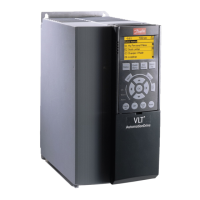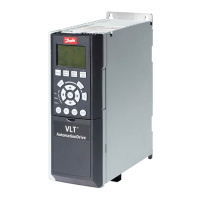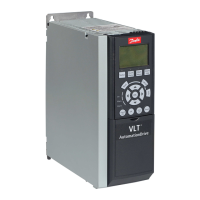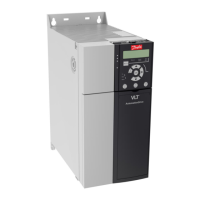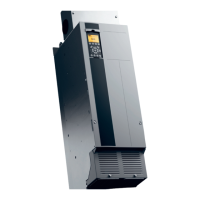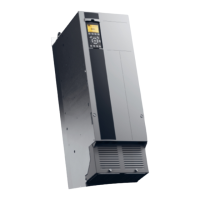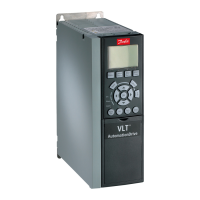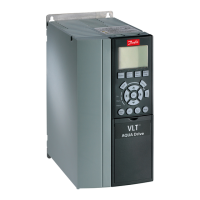aluminium, steel or lead. There are no special
requirements for the mains cable.
•
Installations using rigid metal conduits are not
required to use screened cable, but the motor
cable must be installed in conduit separate from
the control and mains cables. Full connection of
the conduit from the frequency converter to the
motor is required. The EMC performance of
flexible conduits varies a lot and information from
the manufacturer must be obtained.
•
Connect the screen/armour/conduit to earth at
both ends for motor cables as well as for control
cables. In some cases, it is not possible to
connect the screen in both ends. If so, connect
the screen at the frequency converter. See also
Earthing of Braided Screened/Armoured Control
Cables.
•
Avoid terminating the screen/armour with twisted
ends (pigtails). It increases the high frequency
impedance of the screen, which reduces its
effectiveness at high frequencies. Use low
impedance cable clamps or EMC cable glands
instead.
•
Avoid using unscreened/unarmoured motor or
control cables inside cabinets housing the
frequency converter(s), whenever this can be
avoided.
Leave the screen as close to the connectors as possible.
Illustration 7.62 shows an example of an EMC-correct
electrical installation of an IP 20 frequency converter. The
frequency converter is fitted in an installation cabinet with
an output contactor and connected to a PLC, which is
installed in a separate cabinet. Other ways of doing the
installation may have just as good an EMC performance,
provided the above guide lines to engineering practice are
followed.
If the installation is not carried out according to the
guideline and if unscreened cables and control wires are
used, some emission requirements are not complied with,
although the immunity requirements are fulfilled. See the
paragraph EMC test results.
http://www.RSPSupply.com/p-21462-Danfoss-131B8966-VLT-Automation-VT-Drive-VFD-FC301-230V-5-HP.aspx

